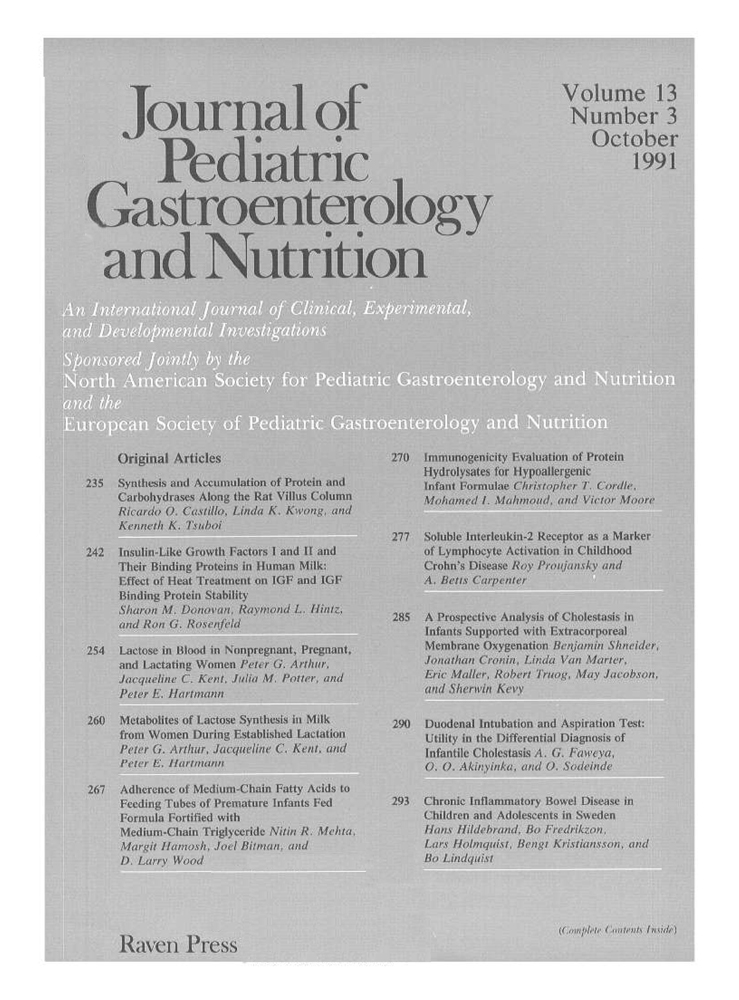Synthesis and Accumulation of Protein and Carbohydrases Along the Rat Villus Column
Abstract
Summary: Enterocytes of the intestinal mucosa of infant and adult rats continuously proliferate in the crypt, mature as they migrate along the villus column, and are discharged from the villus tip. We examined the synthesis patterns of total protein, lactase-phlorizin hydrolase, sucrase-isomaltase, and maltase-glucoamylase as well as the accumulation of these enzymes in cells during migration along the villus. Labeled leucine was administered intraperitoneally to suckling and young adult rats, and radioactivity was determined in protein and digestive carbohydrase pools of developing villus cells separated sequentially from tip to base of the villus column. The developing cells were found to continuously accumulate protein and carbohydrases as they ascended the villus column. In addition, incorporation of radioactivity into total protein and carbohydrase pools occurred at generally constant rates along the length of the villus. These studies showed that the differentiated enterocyte of both infant and young adult rat intestine exhibits a pattern of continuous growth while migrating the length of the villus column and maintains synthesis of protein and digestive carbohydrases at generally constant rates during this time.




